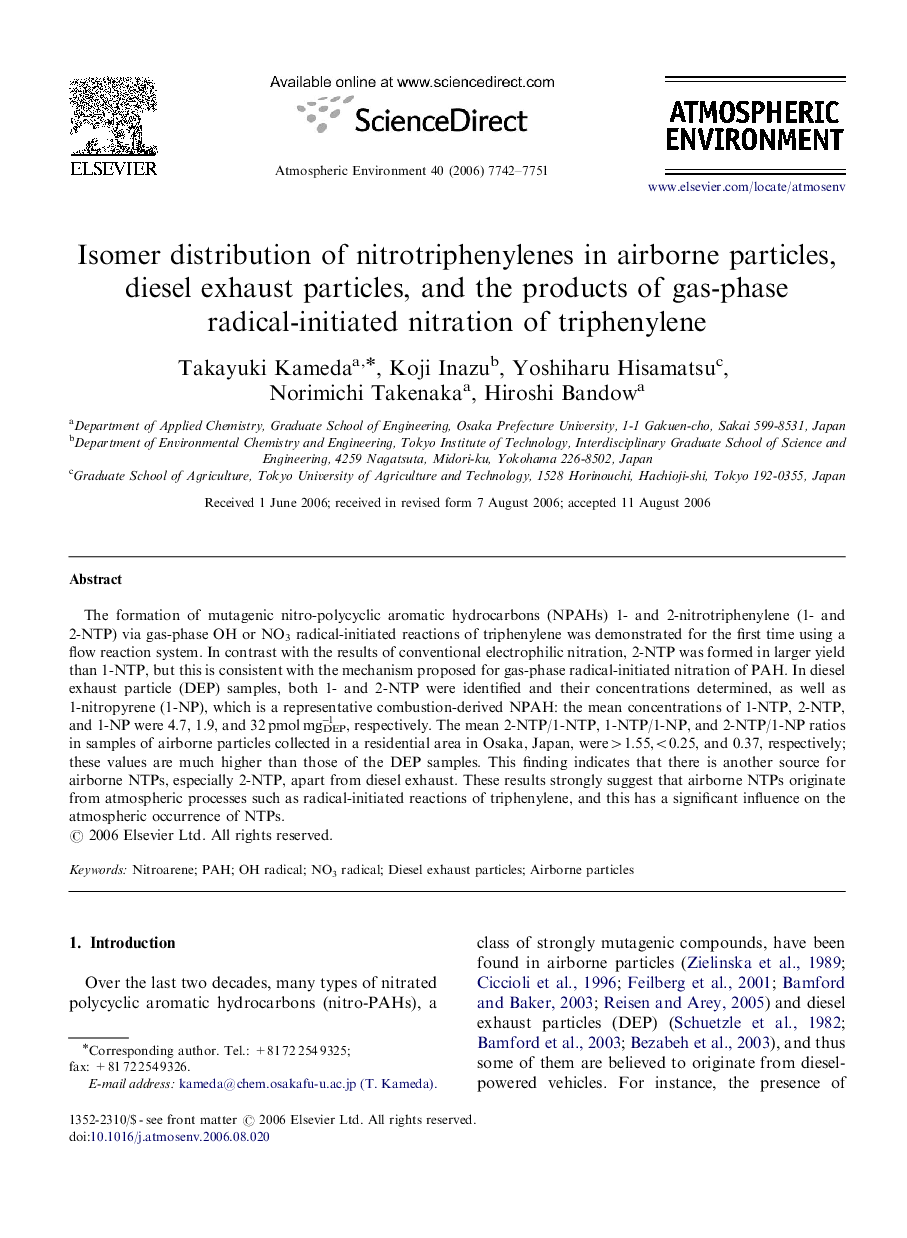| Article ID | Journal | Published Year | Pages | File Type |
|---|---|---|---|---|
| 4444450 | Atmospheric Environment | 2006 | 10 Pages |
The formation of mutagenic nitro-polycyclic aromatic hydrocarbons (NPAHs) 1- and 2-nitrotriphenylene (1- and 2-NTP) via gas-phase OH or NO3 radical-initiated reactions of triphenylene was demonstrated for the first time using a flow reaction system. In contrast with the results of conventional electrophilic nitration, 2-NTP was formed in larger yield than 1-NTP, but this is consistent with the mechanism proposed for gas-phase radical-initiated nitration of PAH. In diesel exhaust particle (DEP) samples, both 1- and 2-NTP were identified and their concentrations determined, as well as 1-nitropyrene (1-NP), which is a representative combustion-derived NPAH: the mean concentrations of 1-NTP, 2-NTP, and 1-NP were 4.7, 1.9, and 32 pmol mgDEP–1, respectively. The mean 2-NTP/1-NTP, 1-NTP/1-NP, and 2-NTP/1-NP ratios in samples of airborne particles collected in a residential area in Osaka, Japan, were>1.55,<0.25, and 0.37, respectively; these values are much higher than those of the DEP samples. This finding indicates that there is another source for airborne NTPs, especially 2-NTP, apart from diesel exhaust. These results strongly suggest that airborne NTPs originate from atmospheric processes such as radical-initiated reactions of triphenylene, and this has a significant influence on the atmospheric occurrence of NTPs.
